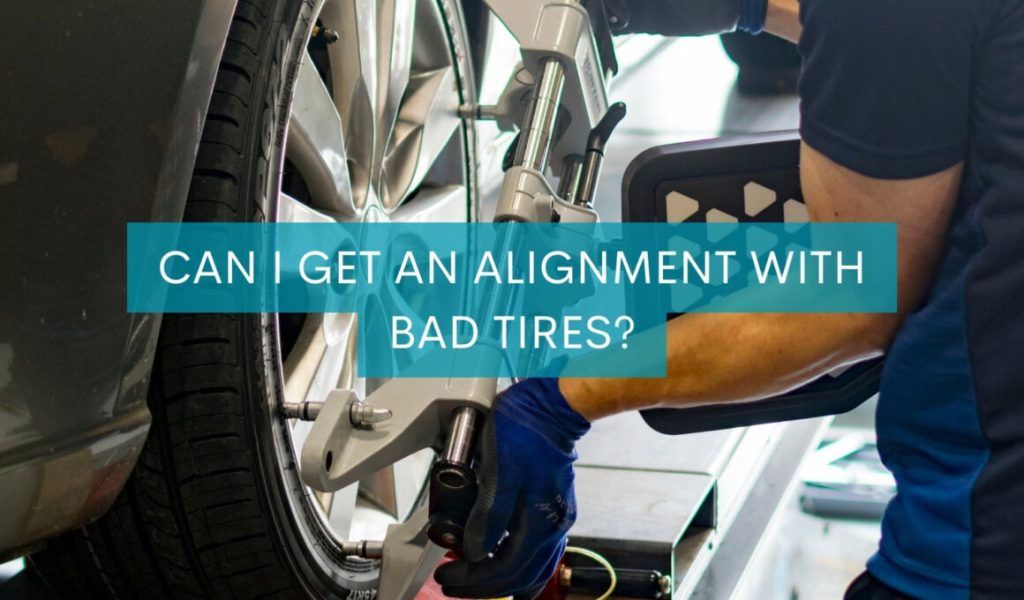Can I Get an Alignment with Bad Tires? Exploring Effects and Solutions
In the realm of vehicle maintenance, the relationship between wheel alignment and tire condition is a crucial one. One common question that arises is whether it’s possible to get a wheel alignment with bad tires. In this article, we will delve into this query, addressing the effects, considerations, and potential solutions.
Importance of Wheel Alignment
Maintaining proper wheel alignment is essential for the overall performance, safety, and longevity of your vehicle. Correct alignment ensures that your tires are perpendicular to the ground and parallel to each other. This optimal configuration minimizes uneven tread wear, enhances fuel efficiency, and provides stability while driving.
Can You Align Bad Tires?
The short answer is that it’s generally not advisable to align severely worn or damaged tires. Alignment involves adjusting the angles of the wheels, optimizing their contact with the road. However, bad tires can undermine the effectiveness of the alignment process. If the tires are significantly worn, misshapen, or have irregular tread patterns, attempting to align them might yield temporary results at best.
Signs of Bad Tires
Before exploring the feasibility of aligning bad tires, it’s important to recognize the symptoms of tire issues. Identifying these signs can help you determine whether your tires are fit for alignment or require replacement.
Uneven Tread Wear
One of the primary indicators of tire problems is uneven tread wear. Inspect your tires regularly and pay attention to any discrepancies in tread depth across the tire surface. If you notice significant variations, it could signify improper tire inflation, misalignment, or suspension issues. Addressing these problems promptly can help extend the life of your tires and improve alignment effectiveness.
Vibration and Shaking
Experiencing vibrations or shaking while driving can be unsettling and indicates potential tire or alignment problems. Misaligned or damaged tires can lead to vibrations that are particularly noticeable at higher speeds. While alignment may help reduce these vibrations to some extent, addressing the root cause – whether it’s tire wear, balance issues, or other factors – is essential for a comprehensive solution.
Effects of Aligning Bad Tires
While it might be tempting to attempt an alignment with bad tires to rectify steering issues, it’s essential to understand the potential outcomes and limitations.
Short-Term Improvement
In some cases, aligning bad tires could provide a temporary improvement in steering and handling. However, this improvement is likely to be short-lived. The underlying issues related to tire wear or damage will continue to affect the tires’ performance, leading to a diminished alignment effect over time.
Long-Term Consequences
Aligning severely worn or damaged tires can have long-term consequences. Even if the alignment temporarily improves, the irregularities in the tire’s shape and tread will continue to cause uneven wear and compromise vehicle stability. This can accelerate tire deterioration, potentially leading to safety hazards and reduced overall performance.

When Alignment is Not Advisable
It’s important to recognize situations where attempting an alignment with bad tires is not advisable due to safety and practical considerations.
Severely Worn Tires
If your tires are significantly worn, aligning them might provide only marginal benefits. Severely worn tires have irregular tread patterns and compromised structural integrity, which makes achieving and maintaining proper alignment challenging. In such cases, investing in new tires becomes a more logical solution for both safety and long-term savings.
Can I Get an Alignment with Bad Tires: Identifying Irreparable Tire Damage
Before considering alignment, assess your tires for irreparable damage. Punctures, sidewall bulges, or tire separation are indicators that the tire’s integrity is compromised. Aligning damaged tires not only yields minimal alignment benefits but can also exacerbate safety risks. In these instances, tire replacement should be a top priority.
Balancing Alignment and Tire Replacement
To strike a balance between alignment and tire replacement, it’s essential to evaluate the extent of tire wear and alignment issues. If your tires are slightly worn and exhibit mild alignment problems, aligning them as part of routine maintenance might provide temporary benefits. However, if wear is substantial or alignment challenges persist, prioritize tire replacement to ensure optimal vehicle performance and safety.
Alternative Solutions
While aligning severely worn or damaged tires might not yield optimal results, there are alternative solutions to address alignment issues and maximize tire performance.
Tire Rotation
Regular tire rotation is a preventative measure that can help extend the lifespan of your tires and promote even wear. By periodically swapping the tires’ positions, you distribute the wear more evenly, reducing the impact of alignment-related problems. Consult your vehicle’s manual for recommended rotation intervals and patterns.
Can I Get an Alignment with Bad Tires: Tire Inspection
Before pursuing alignment, conduct a thorough inspection of your tires. Look for signs of wear, damage, or other issues that might hinder the effectiveness of alignment. Addressing these problems before alignment can help ensure that the process yields more meaningful and lasting results.
Consulting a Professional
When faced with alignment concerns and tire condition questions, consulting a professional mechanic is invaluable. A skilled mechanic can assess your tires’ condition, alignment issues, and overall vehicle health. Their expertise can guide you toward the most appropriate course of action, whether it’s alignment, tire replacement, or other necessary repairs.
Making Informed Decisions
Navigating the question of whether to align bad tires requires careful consideration and an understanding of your vehicle’s needs. While alignment plays a crucial role in maintaining vehicle performance and safety, it’s essential to balance this with the condition of your tires.
Can I Get an Alignment with Bad Tires : Prioritizing Safety and Performance
Safety should always be the top priority. If your tires are severely worn, damaged, or exhibit signs of irreparable issues, pursuing alignment is not the ideal solution. Instead, prioritize tire replacement to ensure optimal vehicle stability, handling, and overall safety.
Understanding the Nuances
Every vehicle situation is unique. Whether alignment is feasible with marginally worn tires depends on factors such as tire wear patterns, alignment severity, and your driving habits. Consulting a professional mechanic for a comprehensive assessment can provide you with personalized guidance based on your specific circumstances.
In the end, making informed decisions involves weighing alignment benefits against tire condition realities. A well-aligned vehicle with healthy tires is a recipe for a smoother ride and enhanced safety on the road.




